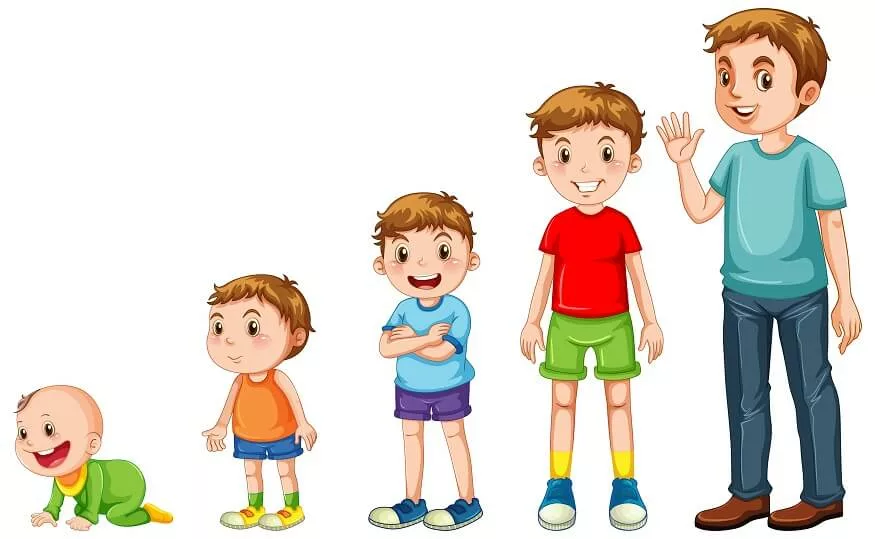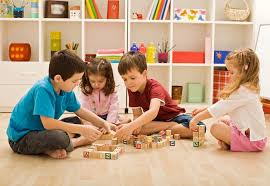Understanding stages of child development is essential for parents, educators, and caregivers. These stages outline the physical, cognitive, and social changes that occur as children grow. This guide delves into each stage, explores child development psychology, discusses learning through play in child development, and offers resources like books and journals to deepen your knowledge.
What is child development?
Child development is how children grow and acquire skills across various domains, including physical, cognitive, social, and emotional areas. This development unfolds in stages, each with specific milestones that indicate typical growth and abilities expected at certain ages. From infancy through adolescence, children progress in understanding, problem-solving, interacting, and communicating, all contributing to becoming well-rounded adults. For families choosing homeschooling, this developmental awareness is especially valuable, as it helps parents tailor educational experiences to support each stage of their child’s growth and unique learning needs.
1. The 7 Stages of Child Development: Key Milestones:
The 7 stages of child development are essential in tracking a child’s progress. Each stage has unique milestones and plays a vital role in overall growth:

- Prenatal Stage: Development before birth, where the foundations of physical and brain growth are laid.
- Infancy (0-2 years): Rapid physical and cognitive growth as children begin to interact with their environment.
- Toddlerhood (2-4 years): Exploration and language skills flourish.
- Early Childhood (4-7 years): Social skills develop, and cognitive understanding expands.
- Middle Childhood (7-11 years): Children learn complex skills, like problem-solving.
- Adolescence (12-18 years): Physical maturity and identity formation.
- Young Adulthood: Development of independence and personal values.
Understanding these stages of child development helps in recognizing normal development and addressing any early challenges.
2. Child Development Psychology: Theories Behind Growth
Child development psychology focuses on how children think, feel, and behave as they grow. Influential theories, such as those from Piaget, Erikson, and Vygotsky, outline how children process information and develop emotionally and socially. For example, cognitive development allows the child to form connections, solve problems, and communicate effectively.

Cognitive Development in Children:
Cognitive development is crucial to how children learn and interact. It includes thinking, problem-solving, and language skills. By understanding cognitive growth, parents can better support educational and social experiences that enrich a child’s learning journey.
3. Types of Child Development: A Comprehensive Look
Child development is a multifaceted process, encompassing several types:
- Physical Development: Growth of the body, motor skills, and sensory capabilities.
- Social and Emotional Development: Developing relationships, understanding emotions, and learning empathy.
- Language Development: Learning sounds, words, and eventually fluent communication.
Each type of development is interconnected, contributing to the child’s well-being and success in different life areas.
4. Learning Through Play: A Vital Part of Stages of Child Development
One of the most effective ways children learn is through play, especially outdoor play, which adds an enriching element to their development. Learning through play encourages creativity, social skills, and problem-solving abilities. Both indoor and outdoor play activities support cognitive, social, and emotional growth, making them essential to child development.

Play-based learning fosters an environment where children can explore their ideas, learn self-regulation, and practice empathy in a fun, engaging manner. Outdoor play, in particular, allows kids to connect with nature, build physical skills, and gain confidence as they interact with their surroundings. These experiences are essential across various stages of child development, supporting growth in cognitive, social, and emotional skills at each milestone.
5. Child Development Psychology and the Impact of Narcissistic Parenting:
Narcissistic parenting can negatively impact child development stages psychology. When a parent’s focus is primarily on themselves, children may struggle with self-esteem, emotional regulation, and social skills. Understanding the importance of a supportive and nurturing environment is essential for healthy psychological development.
6. Resources of Stages Of Child Development: Books, Classes, and Journals:
Expanding knowledge on child development is easy with these resources:
- Child Development Books: Books like “The Whole-Brain Child” and “How Children Succeed” provide valuable insights into parenting and child psychology.
- Child Development Journal: The Child Development Journal offers research articles covering topics in cognitive, emotional, and social development.
- Child Development Classes: Enrolling in a child development class gives parents and educators practical skills for supporting children at every stage.
These resources help in applying theoretical knowledge practically, which supports children’s growth and well-being.
Conclusion:
From infancy to adolescence, the stages of child development are essential milestones in a child’s life. By understanding psychological theories, engaging in learning through play, and utilizing valuable resources, parents and educators can help children flourish through every phase. For more information on these topics, refer to educational resources like child development books, journals, and classes designed to offer comprehensive guidance on supporting growth at each stage.
FAQS:
What are the 5 stages of child development?
The five stages of child development are infancy, early childhood, middle childhood, adolescence, and young adulthood. Each stage represents key physical, cognitive, and emotional growth milestones.
What is child development?
Child development is the series of physical, cognitive, emotional, and social changes children undergo from infancy to adulthood, allowing them to achieve independence, self-awareness, and essential life skills.
What do you mean by development of a child?
Development of a child refers to the continuous and sequential process by which a child grows physically, learns to think and reason, builds emotional awareness, and develops social skills.
What are the five main areas of child development?
The five main areas of child development are physical, cognitive, emotional, social, and language development, each contributing uniquely to a child’s overall growth and learning.
What are fine motor skills in child development?
Fine motor skills involve small, precise movements like grasping, drawing, or picking up objects, which are essential for tasks such as writing and self-feeding.
What are gross motor skills in child development?
Gross motor skills are large body movements, like walking, running, or jumping, that develop strength, coordination, and balance, enabling children to move and play actively.
How does technology affect child development?
Technology can both aid and hinder child development. It offers educational tools but can also impact attention span, social skills, and physical activity if not balanced with offline interactions.
How does music help a child’s development?
Music supports child development by enhancing language, rhythm, memory, and motor skills, and it encourages creativity and emotional expression.
How to develop a child’s self-confidence?
To build a child’s self-confidence, encourage their efforts, celebrate achievements, provide constructive feedback, and create an environment where they feel valued and understood.
External Resources:
- American Academy of Pediatrics: Child Development Stages
- CDC: Developmental Milestones
- Zero to Three: Early Development & Learning

Empowering parents to raise happy, confident kids. Get practical parenting tips and advice on our blog, Smart Parent Guides.
